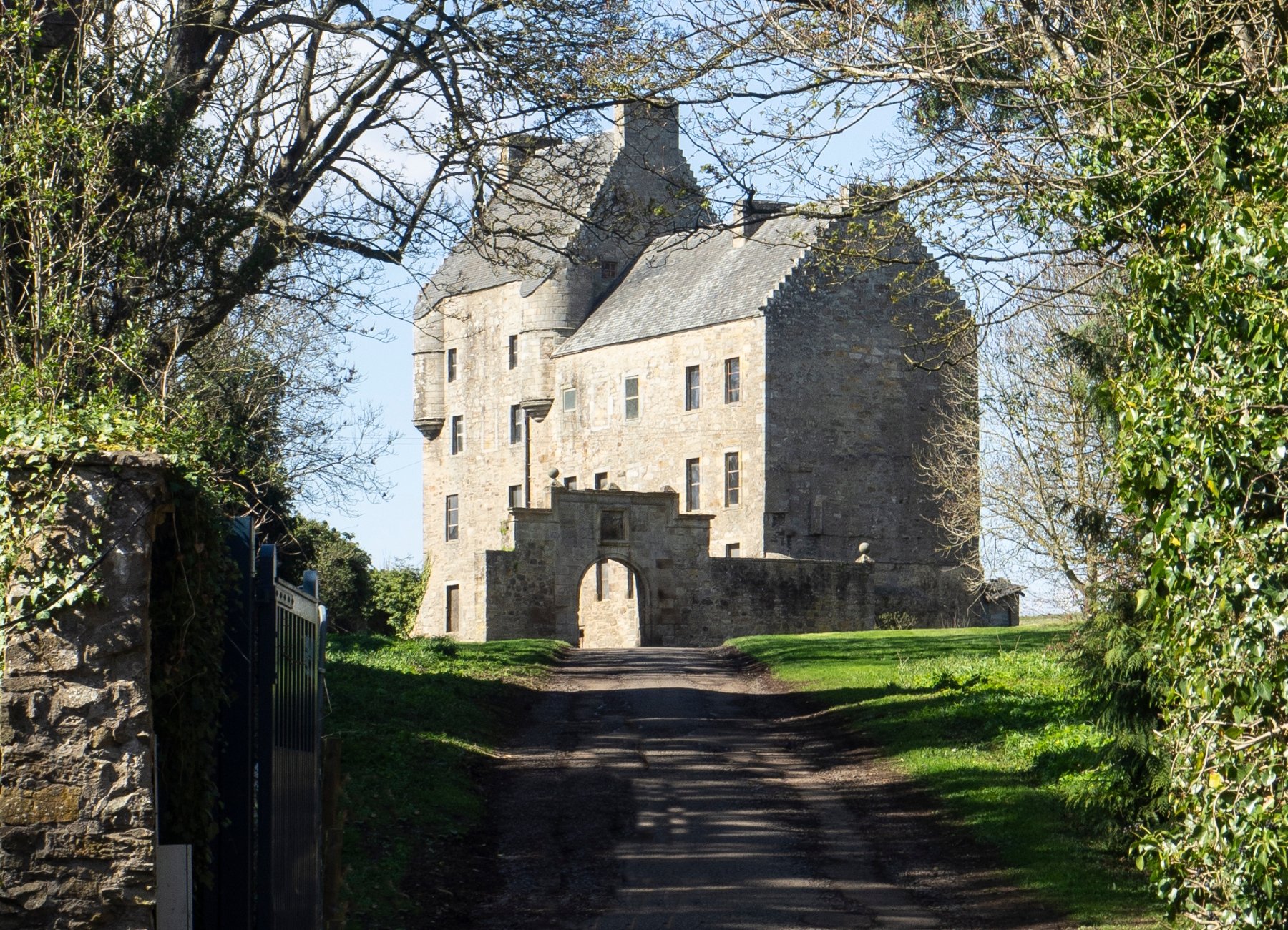The Story of Mary, Queen of Scots
Mary, Queen of Scots is one of the most storied figures in Scottish and British history. She was born in 1542 into the House of Stuart and became Queen of Scotland when she was only 6 days old after her father, King James V, died. Her life was marked by controversy and she is remembered for her ill-fated marriages, her conflicts with Queen Elizabeth I, her association with various intrigues and rebellions, and her eventual execution by Elizabeth in 1587.
Despite her death, Mary's legacy lived on through her son James VI who became King of both Scotland and England after Elizabeth's death in 1603. Every British monarch since then has been descended from Mary. Her life was the stuff of legend and she remains a source of fascination and debate even today. She was a prominent female ruler in a male-dominated time, a Catholic queen in a Protestant country, and a dynastic threat to Elizabeth I. Her dramatic story has inspired countless books, plays, and films over the centuries.
At Scotland’s Wild, our friendly, story-telling guides have led thousands of trips through Scotland. We share history, legends and tales to entice people to visit this incredible country!
If you’d like to check-out our selection of tours, from day trips to islands hopping multi-day adventures - click here.
Early Life and Ascension to Throne
Mary Stewart was born on December 8, 1542 at Linlithgow Palace in West Lothian, Scotland. She was the only surviving legitimate child of King James V of Scotland and his French second wife, Mary of Guise.
Six days after Mary's birth, her father King James V died, leaving the six day old infant as the new Queen of Scots. As an infant monarch, Mary's mother Mary of Guise acted as regent until Mary came of age. Mary's right to the Scottish throne was never in doubt, as she was the only surviving legitimate heir. Her early coronation at nine months old affirmed her status as Queen.
Raised in the royal Stirling Castle, the young Queen Mary's life was filled with turbulence from a young age.
Scotland was rife with political and religious conflicts, as Protestant reformers like John Knox gained influence. Mary's Catholic mother ruled Scotland as regent, causing tensions with Protestants. As a female heir raised Catholic, Mary faced challenges to her rule from Scottish nobles early on.
Marriages and Alliances
Mary's marriages were key political alliances that shaped her reign and destiny. At just 5 years old, she was sent to France to be raised at court and prepare for her marriage to the French Dauphin, Francis. When Mary was 16, she married Francis and became Queen of France as well as Queen of Scotland. This cemented the "auld alliance" between France and Scotland against their mutual enemy, England.
After Francis died in 1560, the 18-year-old Mary returned to Scotland to take up her throne. She struggled to impose control and order on her fractious nobles. In 1565, she married her English cousin, Henry Stuart, Lord Darnley, in the hope of strengthening her claim to the English throne. However, it proved to be an unhappy match. Less than two years later, Darnley was murdered in mysterious circumstances, with many suspecting Mary's involvement.
Mary's marriages for political and dynastic motives defined her life. While securing alliances, they also drew her into endless plots and tragedies. Her determination to impose her authority in Scotland and press her claim to the English throne ultimately led to her downfall.
Conflict with Elizabeth I
Mary's relationship with Elizabeth I, the Queen of England, was complex and often acrimonious. As the granddaughter of Henry VIII's sister Margaret, Mary had a strong claim to the English throne. This brought her into direct conflict with Elizabeth, despite the two queens being cousins.
The rivalry between Mary and Elizabeth was intensified by religion - Elizabeth was Protestant while Mary was Catholic. Some English Catholics viewed Mary as the rightful heir to the English throne over the Protestant Elizabeth. This was a constant source of tension.
Mary's marriages to the heirs of France and Spain threatened Elizabeth, who felt surrounded by powerful Catholic nations. Elizabeth even suspected Mary of plotting against her life.
After Mary was forced to abdicate in Scotland, she fled to England seeking Elizabeth's protection. However Elizabeth was wary and kept Mary imprisoned for 19 years.
Mary made several plots to take the English throne, either by having Elizabeth assassinated or by invading England with Spanish support. She refused to stop using the English royal arms and coat of arms, infuriating Elizabeth. Their rivalry dominated English and Scottish politics for over 20 years, culminating in Mary's execution on Elizabeth's orders in 1587.
Reformation and Catholicism
Mary was raised as a Catholic, the religion of her parents and the French court where she spent most of her childhood. However, during Mary's reign, Scotland underwent a Protestant Reformation led by preacher John Knox. The Scottish nobility adopted Protestantism while Mary remained steadfastly Catholic.
This religious divide caused ongoing tension between Mary and the political establishment in Scotland. Mary allowed some moderate religious reforms, but her own Catholic faith was viewed with suspicion by many Protestant Scottish nobles. They saw her ties to Catholic France and her Guise relatives as threatening.
Mary had to walk a delicate line, trying to balance the demands of the increasingly Protestant nobility while maintaining her own Catholic beliefs. She was pressured to convert to Protestantism or at least compromise with Protestant leaders, but refused to abandon her faith.
Mary's Catholicism would also cause problems in relation to the Protestant Elizabeth I. Some English Catholics viewed Mary as the legitimate Catholic heir to the throne over Elizabeth. This was a source of great concern and paranoia for Elizabeth. Religion played a pivotal role in the rivalry and distrust between the two queens.
Imprisonment in England
In 1568, Mary fled to England seeking protection from her cousin Elizabeth I after her defeat in Scotland. However, Elizabeth was wary of the threat Mary posed to her throne and kept her imprisoned for 19 years in various castles and manor houses in England.
Mary lobbied Elizabeth for her freedom and to be named as Elizabeth's heir. However, Elizabeth feared that naming Mary as her successor would encourage Catholic plots against her life. As a result, Mary remained a prisoner in England for 19 long years, despite repeated pleas to Elizabeth for her release.
During her captivity, Mary's health deteriorated and she suffered from rheumatism that left her lame. Her eyesight also worsened. However, she occupied herself with embroidery, reading, and writing letters. She corresponded with supporters and conspired to take the English throne.
Mary's imprisonment became harsher over time as she continued to plot against Elizabeth.
In 1586, Mary was implicated in the Babington Plot to assassinate Elizabeth. With evidence against her, Mary was tried and convicted of treason. After much hesitation, Elizabeth signed the death warrant for her execution in 1587. Mary met her death bravely at Fotheringhay Castle after 19 years as Elizabeth's prisoner in England. Her son James VI later succeeded Elizabeth as King James I, uniting the crowns of England and Scotland.
Execution
Mary's life came to a dramatic and bloody end in 1587 when she was executed on the orders of her cousin, Queen Elizabeth I. After nearly 20 years imprisoned in England, Elizabeth finally decided that the threat posed by Mary was too great and that she must be eliminated.
On February 8, 1587, in the Great Hall of Fotheringhay Castle, Mary was beheaded in a gruesome scene. She wore a red petticoat - the Catholic color of martyrdom. It took three blows of the axe to complete the execution. Afterwards, the executioner held her severed head up by the hair and declared "God save Queen Elizabeth. May all the enemies of the true Evangel thus perish!"
Mary's last words were “In manus tuas, Domine, commendo spiritum meum” ("Into thy hands, O Lord, I commend my spirit"). Her servants later reported that she faced her death with courage and dignity.
Queen Elizabeth was horrified when she received the account of the execution, claiming that she had not explicitly ordered Mary's death. However, most historians believe she did tacitly approve it, seeing Mary as too dangerous to her throne to remain alive.
Mary's death made her a martyr in the eyes of many Catholics. Her tomb in Westminster Abbey remains a site of pilgrimage today. Though her life was marked by controversy, Mary retains an enduring fascination in the popular imagination centuries after her death.
Controversies and Mysteries
Perhaps the greatest controversy surrounding Mary Queen of Scots is her potential involvement in the murder of her second husband, Lord Darnley. In February 1567, Darnley was killed in an explosion at Kirk o' Field house where he was recovering from illness. Darnley and his servant were found dead in the rubble, apparently strangled.
Suspicion immediately fell on James Hepburn, the 4th Earl of Bothwell, as he had means, motive, and opportunity. Some believe Mary and Bothwell conspired to kill Darnley, as they quickly married soon after his death. However, no direct evidence implicates Mary.
The mystery deepens as all records of the trial disappeared, leaving historians to speculate. Some suggest Darnley was killed in retaliation for his own nefarious plots. Others propose Protestant Scottish nobles murdered him to implicate the Catholic Queen. Whatever the truth, the scandal irreparably damaged Mary's reign.
Centuries later, the extent of Mary's involvement remains ambiguous. While circumstantial evidence abounds, her guilt cannot be proven absolutely. The Darnley affair encapsulates the enigmatic and controversial nature of Mary Queen of Scots. She was implicated in one of history’s most notorious crimes, but the limited records ensure the mystery can never be fully solved.
Legacy
Mary's legacy has proved to be an enduring one, full of continued intrigue and reexamination of her fascinating story. Though she was executed as a traitor by Elizabeth I, Mary's bloodline ultimately triumphed.
Her son James VI of Scotland went on to become James I of England after Elizabeth's death in 1603. This ensured that every British monarch since has been a descendant of Mary, not Elizabeth.
In many ways, Mary won the long rivalry with Elizabeth posthumously through her ancestry. Their entwined stories continue to fuel debate and speculation even now, over 400 years after Mary's death. She remains a controversial figure, with her role as either willing participant or wronged victim in her tumultuous life still hotly contested. Books, movies, and TV shows depicting romanticised versions of Mary's life continue to capture public imagination. Her glamour, intriguing relationships, and enigmatic end ensure she lives on as one of history's most fascinating personas.























